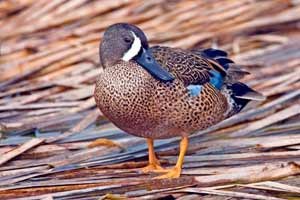Grab your binoculars and birding book, put on your hiking shoes and head outdoors on Saturday, December 15, to count birds as part of the 2012 Audubon San Juan Islands Christmas Bird Count. It’s a great chance for a vigorous outdoor day, and it’s especially fun for kids!
The 2011 Bird Count tallied 25,742 birds and 123 species. The number of species counted has been steadily increasing the last ten years, peaking in 2011. Last year’s weather on count day was clear, calm and in the mid-40’s, but local Audubon director Barbara Jensen says the birds don’t grouse about the weather, and neither do birdwatchers.
Highlights of the 2011 count included three boats with observers and good coverage in the southern end of San Juan Channel. Two blue-winged teal and eared grebes were seen on San Juan, one surfbird on Yellow Island, and two townsend’s and yellow-rumped warblers and a lonely Savannah sparrow on San Juan.
2011 was the first year Audubon worked with the National Parks Conservation Association to do the Battlefield Birding Christmas Bird Count in Civil War era national parks and those numbers were part of the count, said Jensen. Misses included cackling geese, redhead, ring-necked pheasant, wild turkey, turkey vulture, golden eagle, western sandpiper, western screech owl, great horned owl, saw-whet Owl and townsend’s solitaire. Can you help the local Audubon Society find these birds?
Record high counts this year were 1,599 canada geese, whose numbers have been steadily increasing each year, 1,309 northern pintails, 198 white-winged scoters, 103 long-tailed ducks, 57 eurasian-collared dove, 27 Anna’s hummingbirds, 3 black-capped chickadees, 183 pacific wrens, and 167 house sparrows. See if you can beat any of these records.
Audubon bird watchers hope to exceed last year’s low counts of 58 gadwalls, 16 northern shovelers, 80 common loons, a black-bellied plover, 6 killdeers and 22 red crossbills.
For more info and to find count records go to audubon2.org/cbchist/count_table.html”http://audubon2.org/cbchist/count_table.html. The area circle is called WASJ. Choose the span of years to review and a chart is made for species.
To join the count or for more local information, call Barbara Jensen at 378-3068. Many routes need better coverage, so call today to see what the Audubon Society has for you. You don’t have to be an expert, and you get to spend all or part of the day with great people – some of whom can teach you and the kids a lot.



